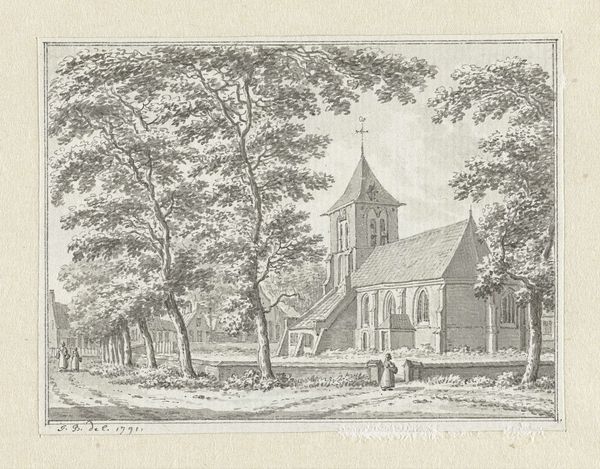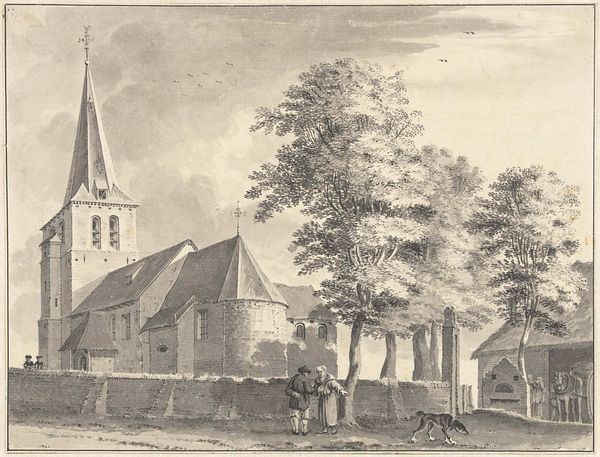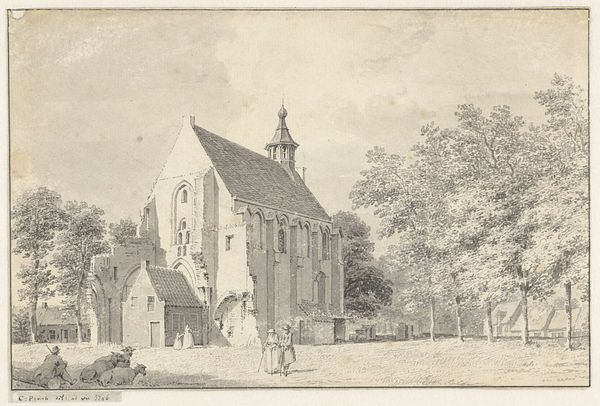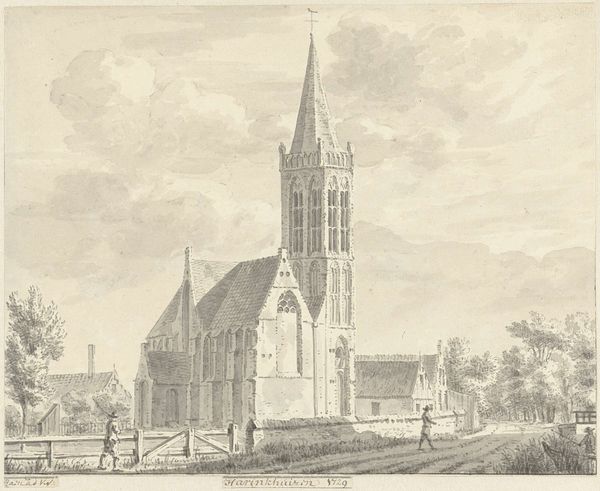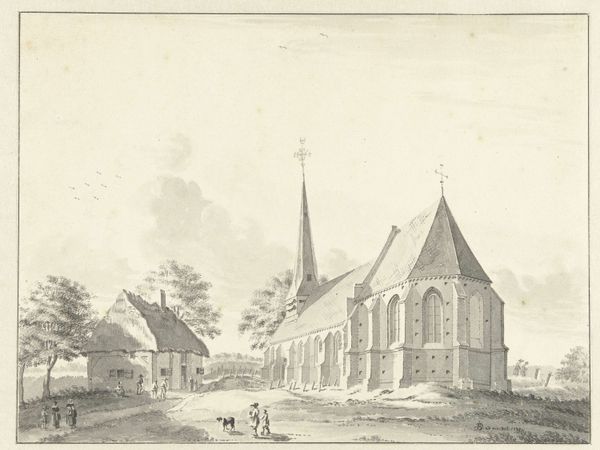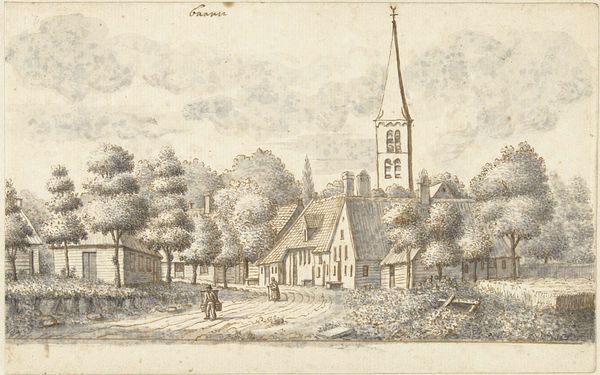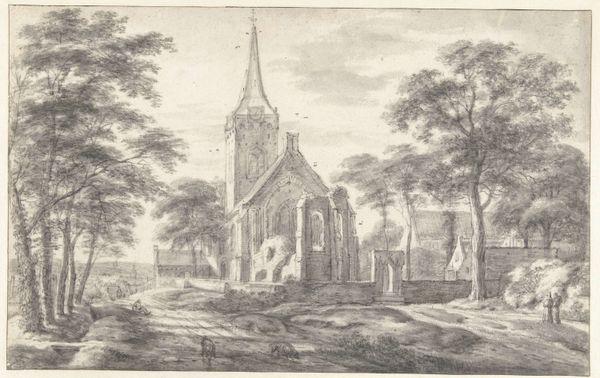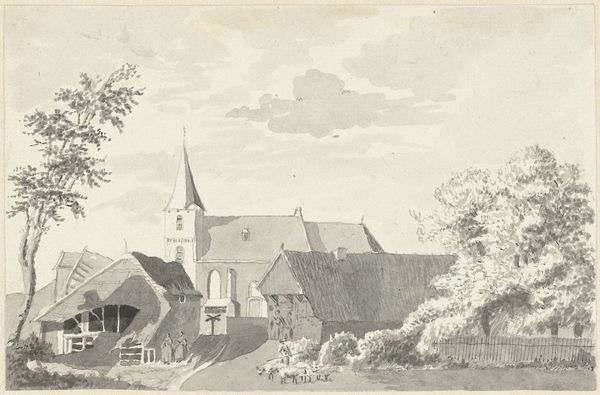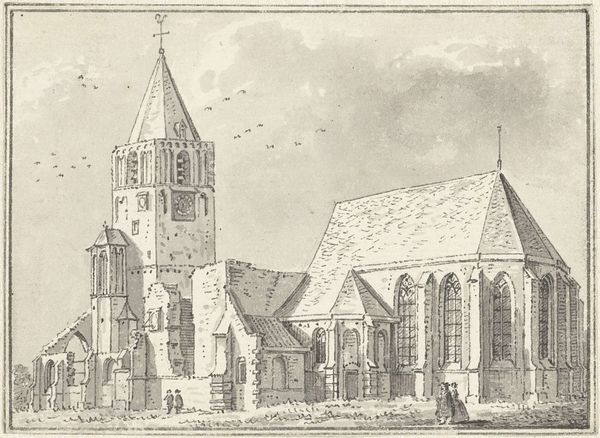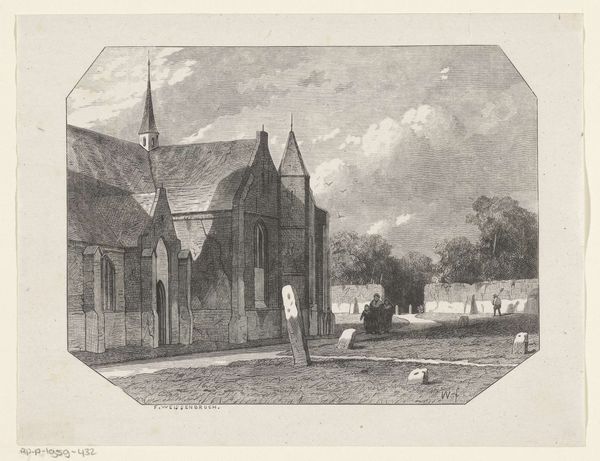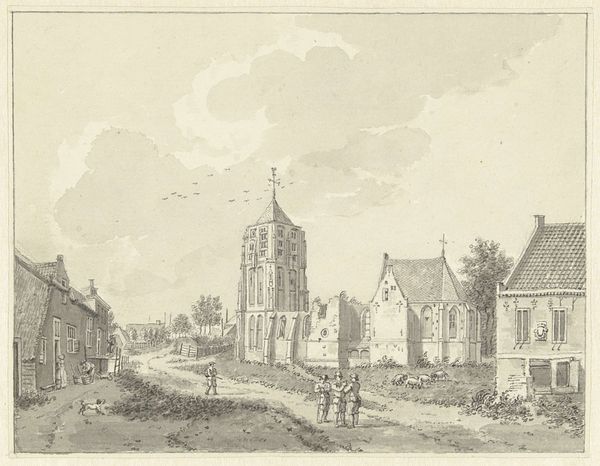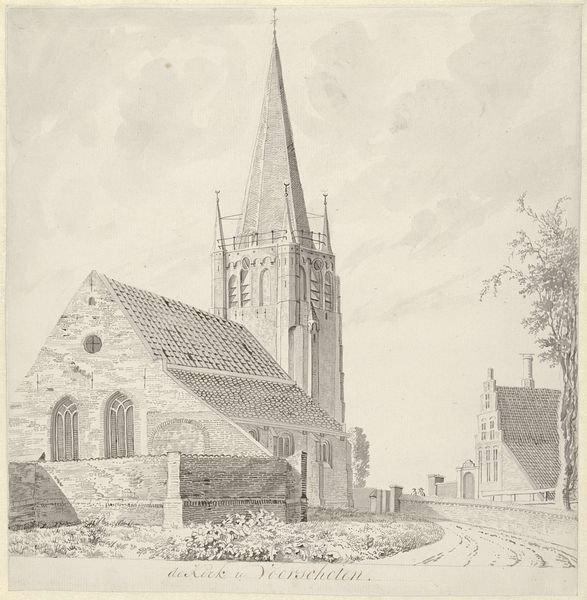
drawing, paper, ink, architecture
#
drawing
#
baroque
#
landscape
#
etching
#
paper
#
ink
#
line
#
cityscape
#
architecture
#
realism
Dimensions: height 168 mm, width 266 mm
Copyright: Rijks Museum: Open Domain
Curator: This is "De kerk van Geffen" or "The Church of Geffen", a drawing by Abraham de Haen the Younger, created in 1733. It resides here at the Rijksmuseum. Editor: My initial impression is one of quiet grandeur. The subdued sepia tones lend a sense of stillness. Look at how the artist balanced the solid geometry of the church with the organic forms of the towering tree on the right. Curator: Indeed. De Haen was meticulously documenting Dutch topography during a period of burgeoning national identity. His drawings provided visual records that were then disseminated as prints, reinforcing a collective sense of place and history. Editor: Yes, and if we look closely at the line work, we see the incredible detail he uses to articulate the building's structure. Notice the subtle shifts in value which articulate a Baroque aesthetic that's both powerful and refined. It's like a map constructed of light and shadow. Curator: Maps and surveys of buildings had serious consequences in the 18th century. The drawings that artists made helped support claims to land ownership as the population increased and there was a need to codify property ownership through architectural likenesses. Editor: And don't overlook the figures in the foreground. They provide scale, yes, but their inclusion invites the viewer into this tranquil scene. There's a clear juxtaposition between nature and the village on offer. Curator: It really places it within the genre of the topographical view that appealed to wealthy patrons in Dutch cities and towns who had financial interests in properties around the area. Editor: For me, it showcases how even the most documentary of intentions can birth a work of art that communicates mood and elegance through sophisticated structural arrangements. Curator: It really invites questions about whose vision of Dutch landscape was prioritised, who benefitted from images circulating, and how it played into the politics of land use in the 18th Century. Editor: Agreed, these political aspects add greater appreciation of its beauty.
Comments
No comments
Be the first to comment and join the conversation on the ultimate creative platform.
